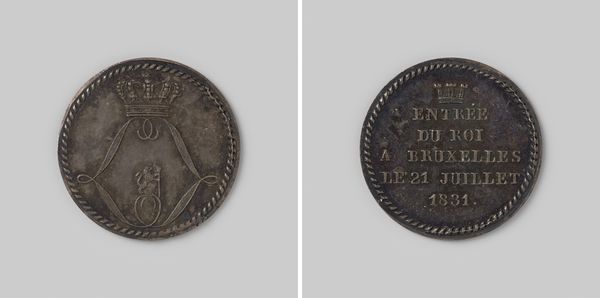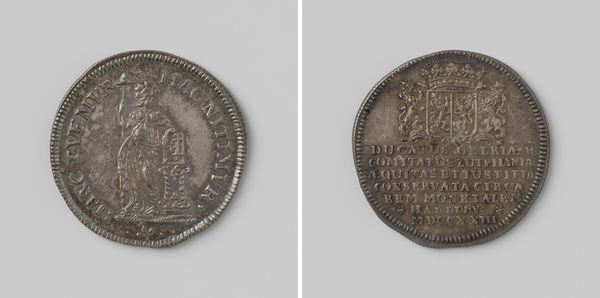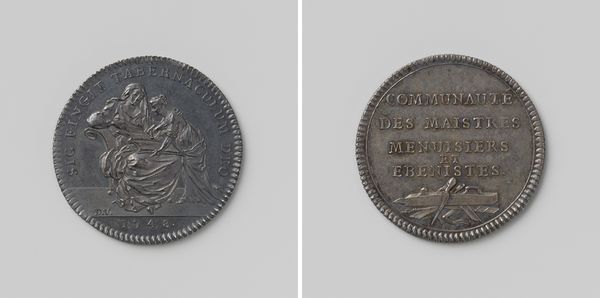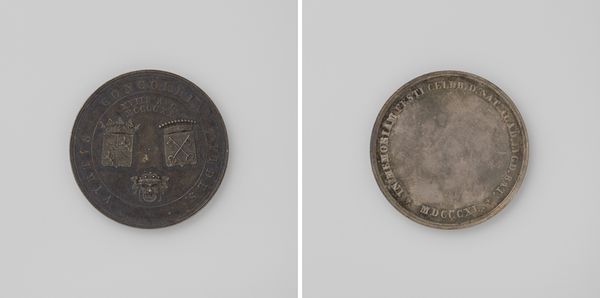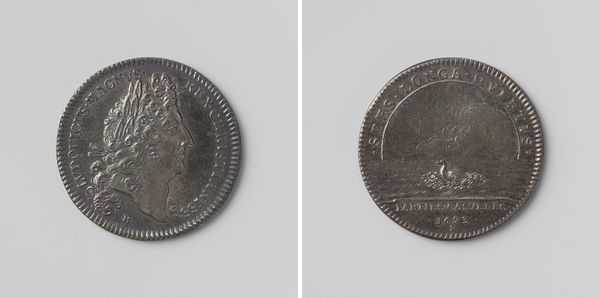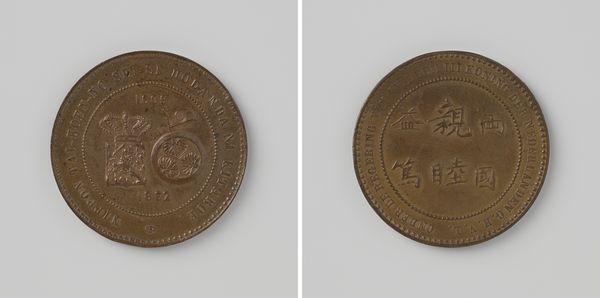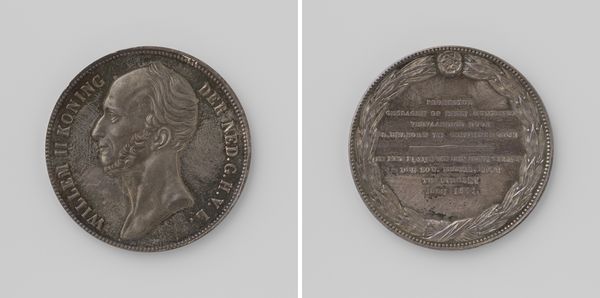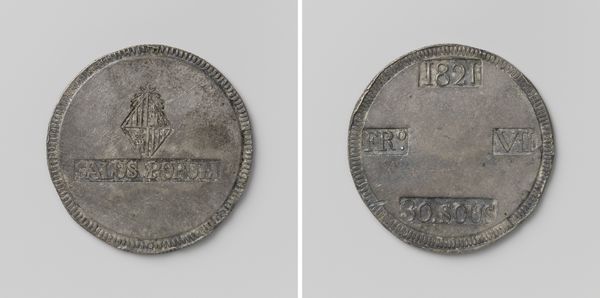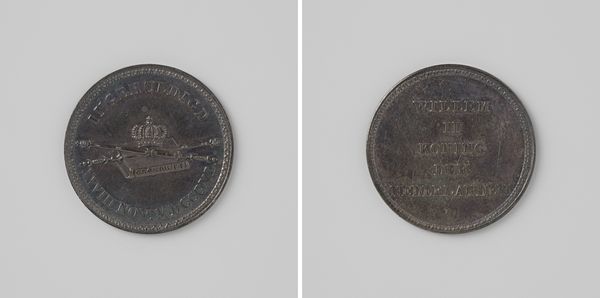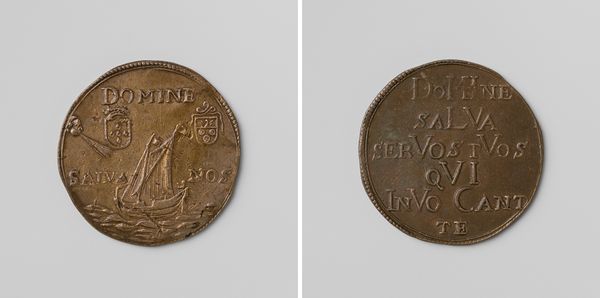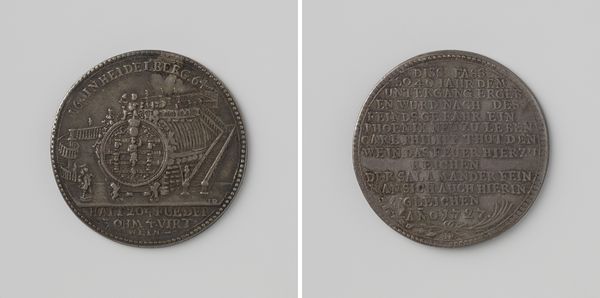
silver, print, metal, engraving
#
portrait
#
neoclacissism
#
silver
# print
#
metal
#
history-painting
#
engraving
Dimensions: diameter 1.5 cm, weight 1.51 gr
Copyright: Rijks Museum: Open Domain
Editor: Here we have a commemorative silver print from 1831 by Adrien Hippolyte Veyrat, titled "Intocht van Leopold van Saksen-Coburg te Brussel," or "The Arrival of Leopold of Saxe-Coburg in Brussels". The imagery is quite minimal—a crown, a monogram, a date. How do you interpret the composition and the visual elements in this work? Curator: Looking at the object formally, one immediately notes the duality established by the coin's two sides. The obverse is dominated by symbolic elements: the crown, meticulously rendered, resting atop the intertwined "L" monogram. This creates an elegant, almost symmetrical arrangement, save for the inclusion of the heraldic lion below. Consider the line quality; notice how Veyrat employs subtle variations in the engraving's depth to achieve a nuanced textural effect, despite the inherent limitations of the medium. Editor: So, the details matter even in such a small piece? Curator: Precisely. The reverse presents a textual arrangement: "ENTRÉE DU ROI A BRUXELLES LE 21 JUIL 1831". This is an assertion, a clear statement memorializing the event. The relationship between the visual symbolism on one side and the declarative text on the other constructs meaning. It demands the viewer consider the relationship of the signifier and signified through its composition. Editor: I see, it's not just about what it depicts but how it depicts it. I appreciate your perspective on the importance of form in understanding the art’s statement! Curator: Indeed. The meticulous craftsmanship evident in both sides transforms the silver round beyond mere currency or simple documentation; it's elevated to a formal study of power, iconography, and remembrance.
Comments
No comments
Be the first to comment and join the conversation on the ultimate creative platform.


